If you're ever in need of a cure for bad eyesight, red light therapy is the treatment of choice. This blog discusses the benefits, side effects, and usages of red light therapy for eyesight. It also provides information on where to find red light therapy devices that have been certified by ETL and FDA as class II medical devices. So if you're looking to improve your vision, read on!
Red light therapy has a long list of benefits that can improve your eyesight. These include:
- Reducing eyestrain and providing relief from eye fatigue.
- Improving vision in near, middle, and far distances.
- Helping to reduce or eliminate glasses/contact lenses required for better sight.
- Improving contrast and clarity when reading, watching TV, or using computer screens.
- Helping to improve night vision.
Red light therapy devices use a combination of red (660nm) and infrared (780-850nm) light to treat a variety of eye conditions. These include:
- Glaucoma
- Cataracts
- Dry eyes syndrome
- Vision problems that are caused by illness or injury, including postsurgical pain and ocular inflammation/swelling from Retinitis Pigmentosa.

How is red light therapy used for eyesight?
There's something about red light therapy that just seems to work better for eyesight. That's why it's a popular treatment for a variety of conditions, from age-related macular degeneration (AMD) to improving your sleep quality. The light photons penetrate the eye more deeply than blue or green light, which leads to better results over time. It's non-invasive and does not require surgery, so red light therapy is a popular choice for people who are hesitant about other treatments. Additionally, red light therapy is used as an alternative to traditional vision correction procedures such as contact lenses or glasses. So, if you're looking for an effective, non-invasive treatment for your eyes, red light therapy might be just what you're looking for!
Red light is an intense wavelength of light. Red diodes are a type of red-emitting diode used in artificial lighting applications to create reddish or orange hues, such as the colour seen in most traffic lights and nightlights. In some cases, LEDs can produce purple colours (note that this isn't true infrared). The use of red diodes has been limited due to concerns about potentially adverse health effects from prolonged exposure at high doses.
Red light 660nm wavelength that has been used to treat and prevent pain, inflammation, fatigue, and other medical conditions. The wavelength is the same as what we see in the sun. Red light therapy is also known as photobiomodulation or photorejuvenation treatment. It helps cells recover faster from damage caused by stress or injury, making them healthier overall.
Red light therapy is a light source that emits red light beam. mitochondria are the powerhouse of the cell — it’s where the cell’s energy is created. The mitochondria have so much importance in human life because many organs and important systems, such as muscle, require power from them. Red light therapy helps cells repair themselves and become healthier by producing more ATP (energy) within their mitochondria, thus enhancing metabolic health.

What are the benefits of red light therapy for eyesight?
It's a common treatment for a variety of eye conditions, including myopia (nearsightedness), hyperopia (farsightedness), and astigmatism. When used in conjunction with eyeglasses or contact lenses, red light therapy can help to correct vision problems. Side effects of red light therapy may include mild discomfort and photo-sensitivity. It's best to use red light therapy at a distance of about 6-8 inches from the light source, and to sit close to the light while wearing protective eyewear.
All Products ETL Intertek Approved
Eyecare can be a daunting task. But don't worry, there's help out there! ETL-approved products use specific amounts and frequencies of red light LED lights to achieve the desired effects. Reduced inflammation and improved skin health are just a few of the many benefits of red light therapy. So why not give it a try? You may be surprised at just how effective red light therapy can be for your eyes. There are a few side effects to be aware of, but they're usually mild and temporary. And if you're looking for a more holistic approach to eye care, red light therapy is a great option to consider! Use red light therapy as part of your daily routine to achieve targeted results.
FDA Registered Class II Medical Device
Red light therapy (RLT) is a FDA-registered class II medical device that has been found to be effective in treating a variety of skin conditions, such as blemishes and wrinkles. Not only is RLT gentle on the eyes, but it also stimulates collagen production, improves dermal elasticity, and reduces signs of aging. The beauty industry is exploding, and red light therapy (RLT) is one of the latest skincare trends to take off. Because it uses low-level light instead of high-intensity lights like those used in laser treatments, RLT is gentler on the eyes and less likely to cause side effects like eye irritation or photophobia. So, if you're looking for a treatment that's both effective and safe, red light therapy (RLT) may be the perfect solution for you!

Frequently Asked Questions
How often should I use red light therapy for my Eyes?
The answer is – it depends. Some people require frequent sessions, while others can get by with a treatment now and then. Most get good results with a 5-minute session, 2 times everyday for several months.
What are some potential side effects of using red light therapy for eyes?
When using red light therapy for the eyes, you may experience a few side effects. Red light therapy may stimulate the production of new blood vessels, and this can result in a decrease in the size of existing brown or tired eyes. All of these effects may last for a short period of time or until the patient adapts to the therapy. However, most people report no major side effects from using red light therapy for the eyes.
What are the benefits of using red light therapy for eyes?
Red light therapy is one of the most popular and effective treatments for various eye conditions like dry eyes, cataracts, macular degeneration, and glaucoma. The main side effects of red light therapy for the eyes are mild reddening of the skin around the eyes, photophobia, or a fear of light. However, these effects can be easily managed with self-care measures like using sunglasses or avoiding direct exposure to sunlight while using red light therapy. Moreover, red light therapy also helps in reducing the symptoms of fatigue, insomnia, and migraine headaches.
What types of applications can use red light therapy for eyes?
There are a variety of applications that can use red light therapy for the eyes. Some of these applications are as follows: - Red light therapy is a great treatment for puffy eyes and dark circles due to its ability to stimulate circulation and reduce inflammation. - It can be used as an alternative or addition to other treatments like rest, ice packs, prescription eyeglasses, and eye drops. - There are different types of red light therapies that you can choose from, so make sure you get the right one for your needs.
Does red light therapy really work?
Red light therapy is effective in treating various eye conditions like dry eye and meibomian gland dysfunction, according to recent studies. However, side effects of red light therapy include mild discomfort, photophobia (anxiety caused by the bright lights), and temporary reddening of the skin around your eyes. However, red light therapy can be used standalone or in combination with other treatments such as photodynamic therapy (PDT) or intravitreal triamcinolone acetonide injection (IV-TRA). PDT uses light energy to kill cancer cells and IV-TRA is a type of injection that helps to treat certain types of vision disorders. There are many applications for red light treatment, such as reducing wrinkles, improving vision, boosting collagen production, and relieving muscle pain. So, whether you're looking for a treatment for an eye condition or just want to improve your overall health and beauty, red light therapy may be an option for you.
References
1. "Light Therapy Improves Vision in Patients with Dry Eye Syndrome." optometrictimes.com. Web. 07 Dec 2016.
2."Red Light Therapy for the Treatment of Meibomian Gland Dysfunction and Dry Eye: A Systematic Review and Meta-Analysis." ophthalmologyonlinejournals.com (2016). Web. 07 Dec 2016,
https://www.ncbi.nlm.nih.gov/pmc/articles/PMC5031759/
https://www.medicalnewstoday.com/articles/_7984_7-red-light-therapy-for-eye-disorders.?page=3



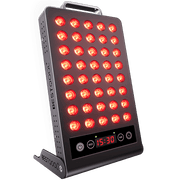








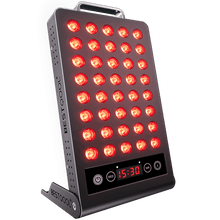
 Small
Small
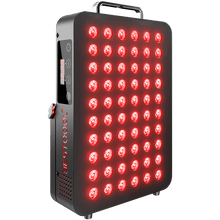
 Moderate
Moderate
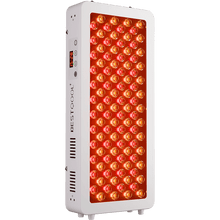
 Moderate
Moderate
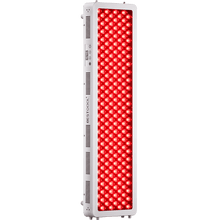
 Moderate
Moderate
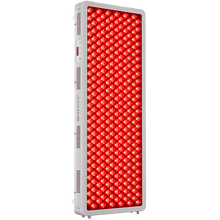
 Full
Full



